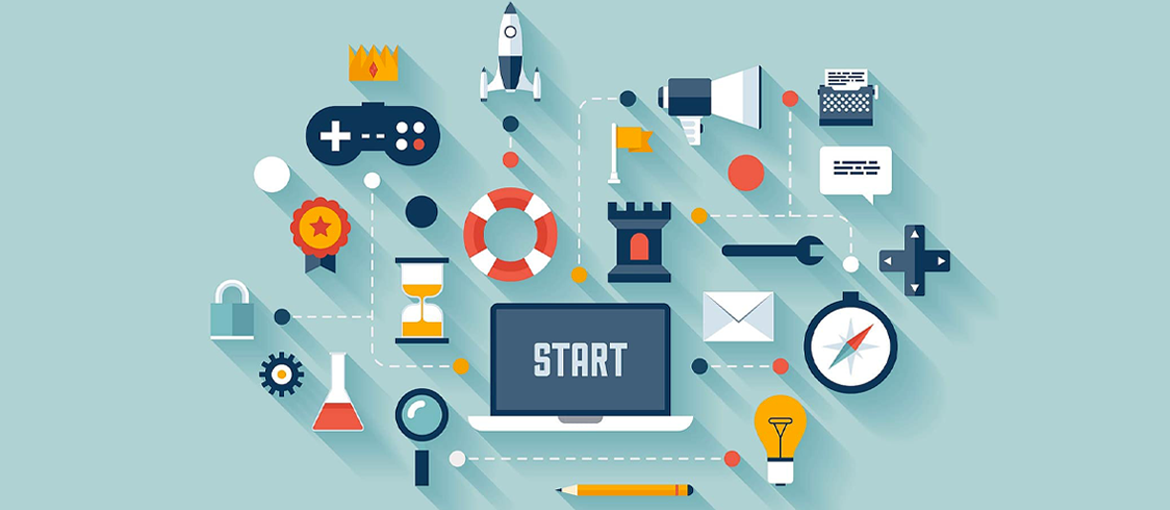Table of Contents
Ever heard of gamification? It’s a hot topic right now, and one that definitely warrants closer examination. To understand what it means, let’s take a look at an experiment.

We’re in Stockholm, and a simple intervention – painting a flight of stairs to look like piano keys – is being used to fight the problem of obesity among Swedes. And it works: people now prefer taking the stairs to standing still on the escalator. This is all thanks to the playful element that walking up the stairs has now taken on. Effective, right?
Gamification involves applying aspects of gaming, such as game mechanisms and design, to non-game contexts. It’s an approach that’s increasingly seen as something serious, not just in government, but above all in business.
When properly designed, gamification systems can have profound effects on our behaviour, with clear applications for sales and marketing activities.
That’s why in this article I want to give you a comprehensive overview of gamification so you can decide whether it’s suitable for your business.
- I’ll start from the beginning, exploring the reasons why human beings are known as homo ludens.
- I’ll reflect on the importance of narrative and storytelling in any gamification project.
- I’ll look at some other case studies to help you understand the impact that gamification can have in business.
- I’ll encourage you to turn thoughts into action using the Gamification Model Canvas.
- And I’ll wrap things up with a few take-aways to note down in your marketing diary.
Ready? Let’s begin!
Games and people
It’s a well-known and widely studied fact that games have been part of human history for millennia. It’s no coincidence that the human species is commonly referred to as homo ludens in the literature. And in the marketplace, companies and customers often willingly play games, without necessarily generating positive results for either party involved.
Indeed, people can:
- Play against brands and companies, pretending not to understand (or to misunderstand) promotions and advertising messages aimed at them. At the extreme, this can also lead to the hijacking of marketing messages designed by brands, with the potential for serious reputational harm. An infamous example is #McDStories, a hashtag driven campaign by fast food giant McDonalds, in which customers were asked to share their positive experiences with the brand. The result? A barrage of negative and very damaging content posted online using the same hashtag by people furious with the brand for contributing to the obesity epidemic.

- Play with brands and companies. Games can also be played between companies: a memorable example is #ExpoTogether, a Twitter campaign launched by FIAT in May 2015 to mark the opening of Expo2015. In it, the brand challenged rival car makers to improvise a virtual dinner using each of their national cuisines, generating some entertaining debates on the social network.
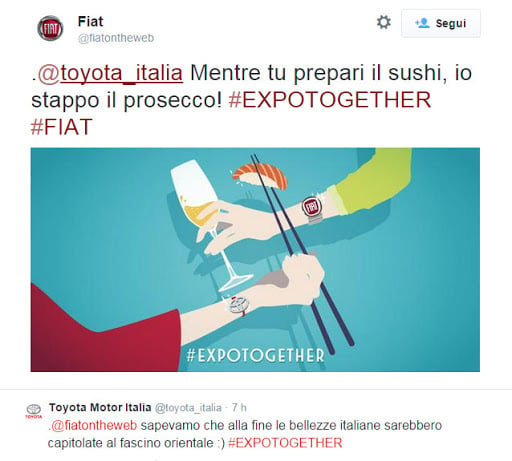
As Gabe Zichermann, author of Game-based Marketing and one of the world’s leading gamification experts notes, the game elements most used by companies can be summarised as follows:
- Points. Because they enable the results of one player to be compared to other players, points are widely used to motivate people to reach the next level up.
- Badges. Popularised by sites like Foursquare, badges are now a common gamification tool.
- Levels. Levels give users a moment of gratification and encourage them reach more advanced levels of gameplay.
- Rankings (leaderboards). Like in real life, rankings allow users to compare their performance to others, tapping into their pride and desire to be a winner.
- Challenges. Competition in its purest form, challenges range from the simple to the complex and can be individual or team-based.
On this last point, if competition is central to gamification, it’s because it brings particular pleasure. From an anthropological point of view, victory and defeat hark back to life or death situations on which, for much of human history, our survival hinged.
Through Gamification, brands and companies design digital experiences that use points, rankings/leaderboards, badges, levels and challenges to harness the habits and behaviours of individuals (customers, consumers, leads) towards specific objectives. There are five key objectives, with the last, engagement, sometimes seen as the “bridge” for achieving the others:
- Loyalty: the ability to get people to keep coming back to the brand world and brand properties, like its website and/or Facebook page.
- Data acquisition and insights: tracking and acquiring user data to be used at a later date for segmented marketing campaigns.
- Knowledge: stimulating the natural growth of product, brand and/or company visibility. Gamification is a lever for boosting earned visibility through word of mouth generated by users and media coverage.
- Information: communicating relevant content about a company’s products or services.
- Engagement: actively involving users, through the relational and horizontal approach that digital and social media allow.
Understanding customers from a playful point of view
Before you dive into designing your own gamification system, you must first fully understand who you’ll be playing with. In other words, map your customers from a playful point of view.
In particular, there are four main clusters into which customers can be grouped:
- Explorers like exploring the world to learn new things, bringing them back into their original community. Their goal is to embark on a transformative journey, an enriching and valuable experience.
- Achievers want to complete the game, to win at all costs, regardless of the context and/or the other people involved. Designing gamified systems aimed exclusively at this type of profile is extremely complex and risky, because it’s based on the assumption that all participants have the same chance of winning.
- Socialisers play not so much to win but rather to meet new people and interact socially. The game becomes the context (and pretext) for meeting people. Most players fit this profile.
- Killers make up a very small percentage of the overall gamer population. Like Achievers, Killers like to win and dominate; they also love to see conflict and the distress of other players.
This means that you have to be careful about how you use gamification. If competition is a key lever, it won’t suit everyone.
- Achievers and Killers are mainly interested in periodically dominating the leaderboard or other elements of competition like badges obtained and points accumulated, and gamification can create a boomerang effect. They tend to be competitive even when there’s no need, or at times when the context disincentivises being so. What’s more, such individuals perceive any collaborators or partners as adversaries to beat, and are incapable of drawing any value from social interactions.
- Explorers and Socialisers are attracted by social connection and immersion in the gamified experience.
It goes without saying that the profiles of players/users that we engage will have very different motivations. Intrinsic motivation originates inside an individual, rather than coming from the world surrounding them. The emotion that we feel when we play a game or discover new elements of its narrative (narrative reward) are intrinsic motivators. Intrinsic motivation stems from curiosity, genuine engagement and a desire to increase our skills. People undertake certain activities because they find them stimulating and gratifying. They want to do them. Extrinsic motivation, on the other hand, is generated by factors that are external to the user, such as the desire for financial gain, recognition, or to avoid unpleasant situations. The driver is not so much wanting to do something, but rather the perception of having to do it.
And… surprise! Intrinsic motivators do not automatically lead to greater success than extrinsic motivators. Their effectiveness depends on many different factors, such as the type of experience created, the audience profile and the skills of the game designer. Also, once they’ve been introduced, replacing intrinsic motivators with extrinsic ones is not that easy, nor is it free of consequences.
The importance of narrative in designing effective gamification systems
It’s well known that stories are an integral part of how people see the world. Indeed, another moniker for human beings is homo narrans. If you haven’t already, I highly recommend reading Diego Fontana’s article about using stories to create effective (video) content.
As people, we interpret the world through stories. That’s why stories are often used as the basis for games: a game like cops and robbers leaves little doubt as to the narrative that inspired it. Videogames are no exception, and many employ varying degrees of storytelling complexity to maintain their ability to engage and excite gamers.
Think about a videogame like Skyrim, which centres around a typical medieval tale in which the protagonist (played by the user) must defeat a dragon hell-bent on destroying the world. The hero must overcome a series of obstacles as their quest takes them through forests, villages, fortresses, caves and more, seeking the help of allies and fighting adversaries along the way. On this journey, the player can acquire resources, skills and abilities, and must (as well as staying alive) develop and strengthen their character. The plot is complex and there isn’t time to explain it here. Nevertheless, it’s a compelling tale of imperial armies, cloistered monks, alchemy, dragon souls, weapons and spells, and ancient orders of guardians. The extraordinary visual richness of the Skyrim world – with thousands of places to explore – combined with the powerful narrative structure enable the game to thrill and entertain its audience.
So, now that we understand what gamification is and involves, it’s time to look at outstanding examples gamification. I’ve chosen three – SAP, Perrier, Despar – that I hope you’ll find interesting and informative.
Three successful case studies: SAP, Perrier and Despar
Road Warrior is the system introduced by SAP to teach its own sales force about mobile technologies.
The project encourages employees to re-imagine their role of sales rep, forced to cover thousands and thousands of miles on the road every year, through the metaphor of the Road Warrior and the slogan Conquering Mobility.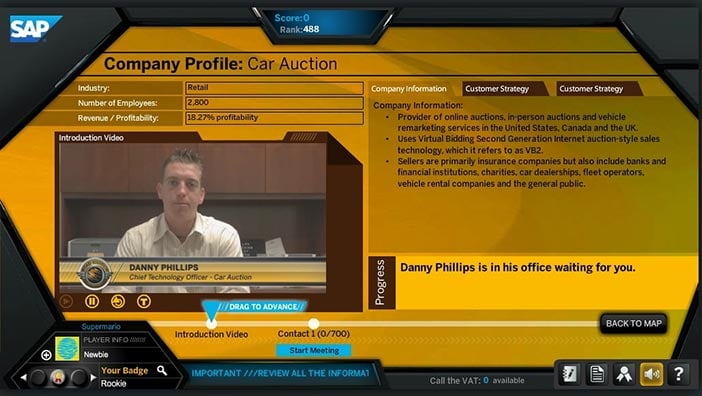
As we know, sales reps are generally highly motivated people, which makes them ideal targets for gamification projects. At SAP, the process involves simulations in which reps respond to customers who ask questions, winning points and badges if they provide satisfactory answers, and losing them as soon as customers contact support. There are lots of levels, often related to technical problems, and reps can challenge one another and compare their results.
Like all training courses, the project aims to improve the skills of participants, with a strong storytelling component that is very much apparent in questions like “Do you have what it takes to be a Road Warrior?” and the Western aesthetic of its web interface. The project has been extremely successful in turning training into an opportunity for play and fun, increasing motivation, fostering team spirit and last – but not least – increasing sales.
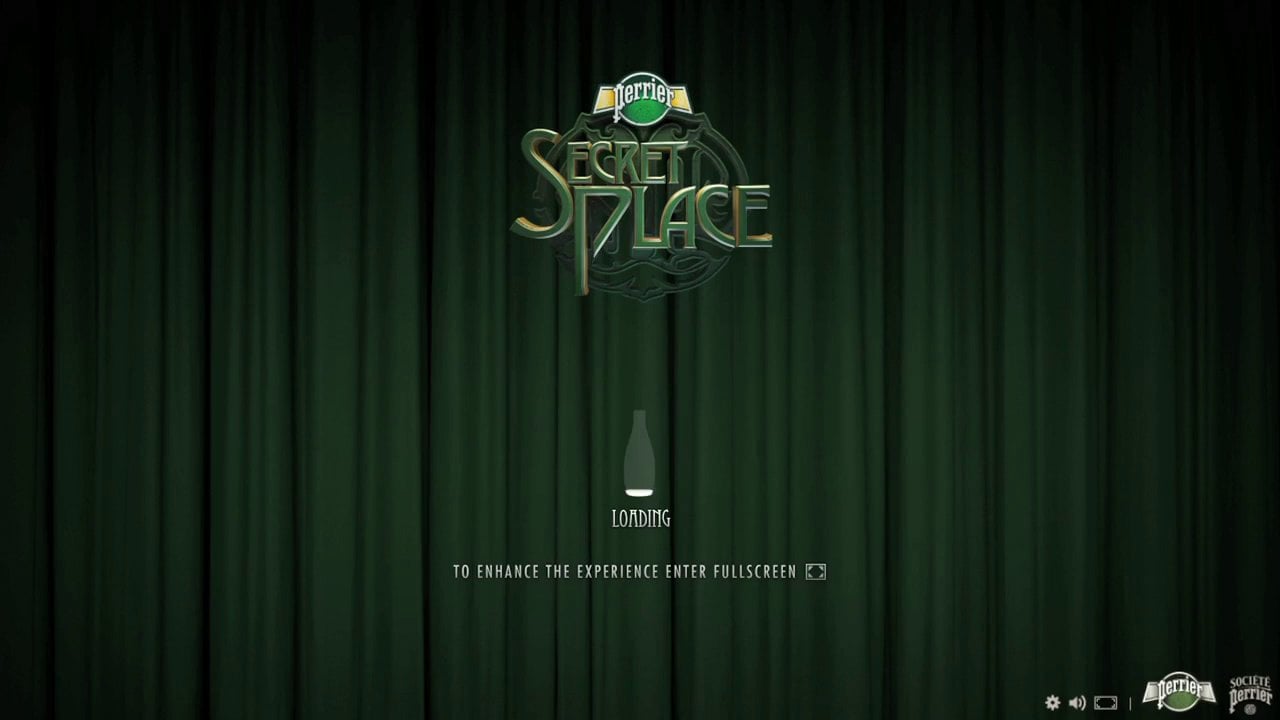
While SAP shows us how gamification can be used within a company, an interesting example of an immersive experience aimed at people outside a company is the Perrier Secret Place marketing campaign. In this project, launched a few years back in an effort to attract younger consumers to the brand through digital media, the user is invited to enter an online fantasy world, following the trail of hip characters who are attending a party. The game starts with a short film set in a launderette in Paris that has a club hidden at the back. By clicking on any of the 60 characters (from barmen to the mysterious woman in black, to the girl darting around the party on roller skates), you can follow the story from their point of view.
But how does the game work? Players find themselves in an uncertain situation, a world populated by lots of different characters, with lots of choreographed scenes (with over an hour of footage in total) and Perrier bottles on every table. The goal is to find a ‘secret’ bottle by going from room to room, talking to people and collecting clues. Finding the bottle isn’t easy: only a handful of players succeed. But the motivation for doing so is significant, which is not to earn points or badges, but rather to win an attractive prize: a trip to one of the world’s leading party cities, from Ibiza to Rio de Janeiro. The experience of immersing yourself in this unique universe and socialising with its denizens was highly engaging. And it convinced the company to create more innovative marketing experiences for consumers compared to the content normally promoted through traditional channels.
Our last case study, that of Italian supermarket Despar Nordest, illustrates not only the effectiveness of gamification in engaging online users, but also how it can be applied to single channels, such as a company website.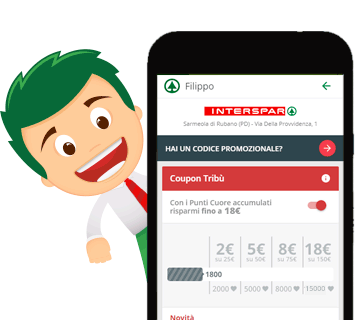
The Despar Tribù project is as smart as it is simple in its design: it ‘gamifies’ the content (webpages) found at www.despar.it. Certain pages on the site are given a value in “heart points” (the units used in firm’s loyalty scheme): by registering and starting/continuing to use the site, you can earn points and download vouchers for money off your shopping in the supermarket.
This turns the firm’s website into a place where people want to stay, thereby significantly increasing the time spent browsing it.
Ready? Let’s get started with the Gamification Model Canvas!
As you read and analyse each case study, your gamification knowledge and skills will increase. Now it’s time to put pen to paper and start designing! One extremely useful tool that can help you is the Gamification Model Canvas. You’ll find many others online, but I think that the tool I’m going to show you below is one of the most complete and widely used.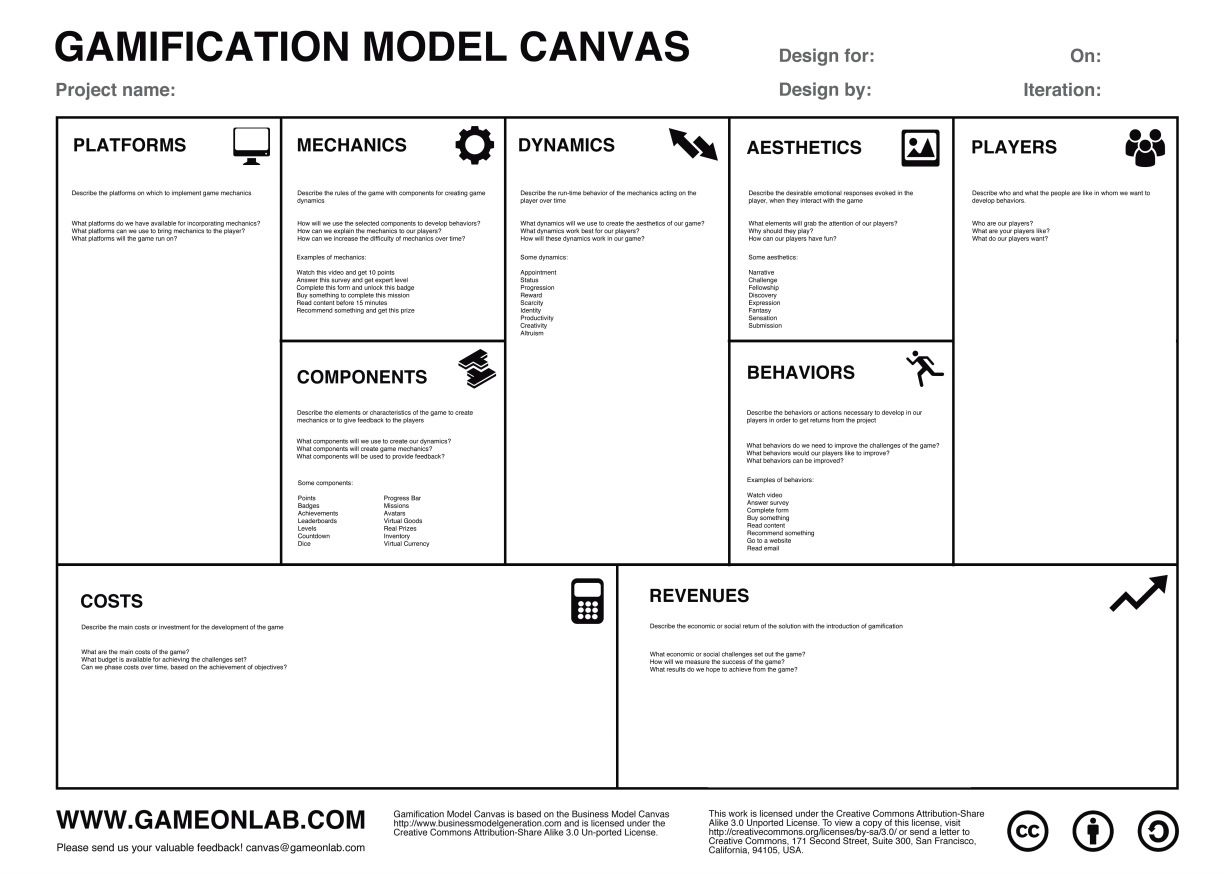
The Canvas is a tool that encourages you to answer a series of questions:
- What platform will your gamification be used on?
- What mechanisms, dynamics and components do you want it to include?
- What aesthetics, narratives and storytelling do you want to use to give it that “extra something”?
- What behaviours do you want to stimulate and in what type of customer/player?
- How much will all this cost in terms of money, time and skills, and what will you gain in return?
If you can fit your project idea on a single page, whether physical or digital (and perhaps with the help of the invaluable Canvanizer), you’ll have taken an important first step towards employing gamification in your business.
Conclusions: five aspects of gamification to keep in mind
Wrapping things up, if you decide to adopt gamification to grow your business, I recommend always focusing on five fundamental aspects:
- Meaning: stories bring layers of meaning to gamified projects and enhance their appeal.
- Interest: objectives in terms of points or rankings can be stimulating in themselves, but narrative developments can be even more interesting and attention holding.
- Identification: gamification projects allow users to become protagonists in the experience by putting themselves in the shoes of characters or following suggested courses of action.
- Engagement: a natural consequence of the above, gamification must engage people to be successful.
- Progression: Well-designed projects always include different levels, but the sense of progression can be even more pronounced and compelling if linked to the phases that structure a story.
On the other hand, thinking of gamification as a game for its own sake is counterproductive, because in doing so we forget that there’s much we can learn, understand and enjoy from games.
Have you thought about using gamification for in your business and marketing? Hopefully, in this article you’ll have found everything you need to know to get started.

